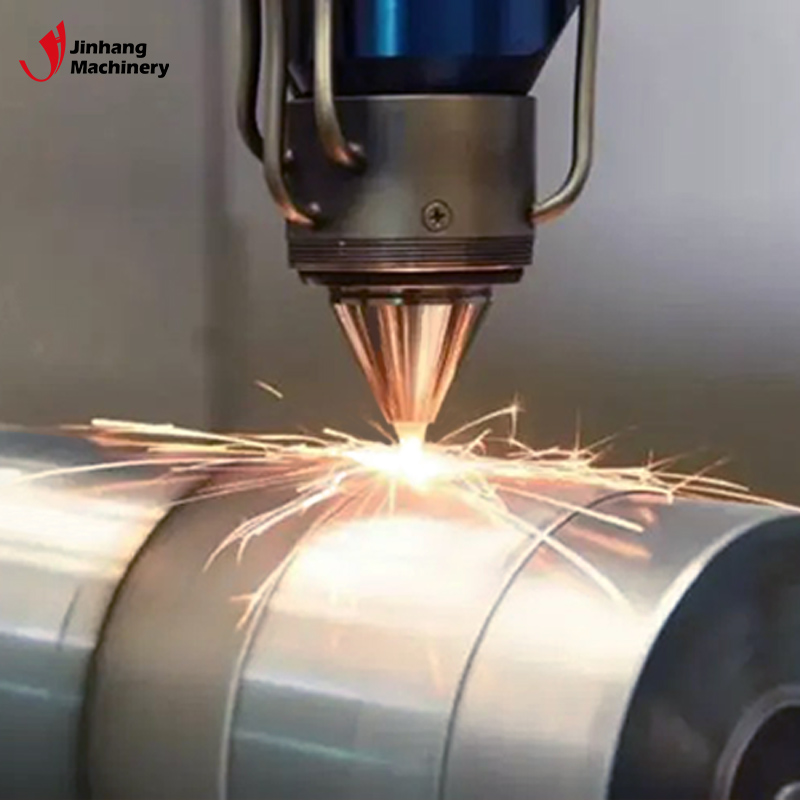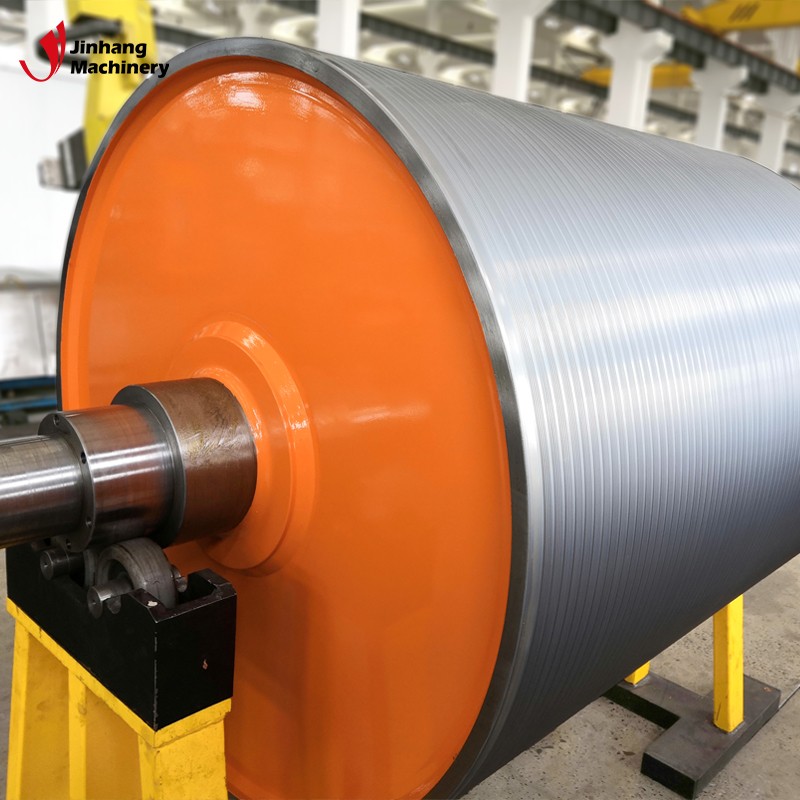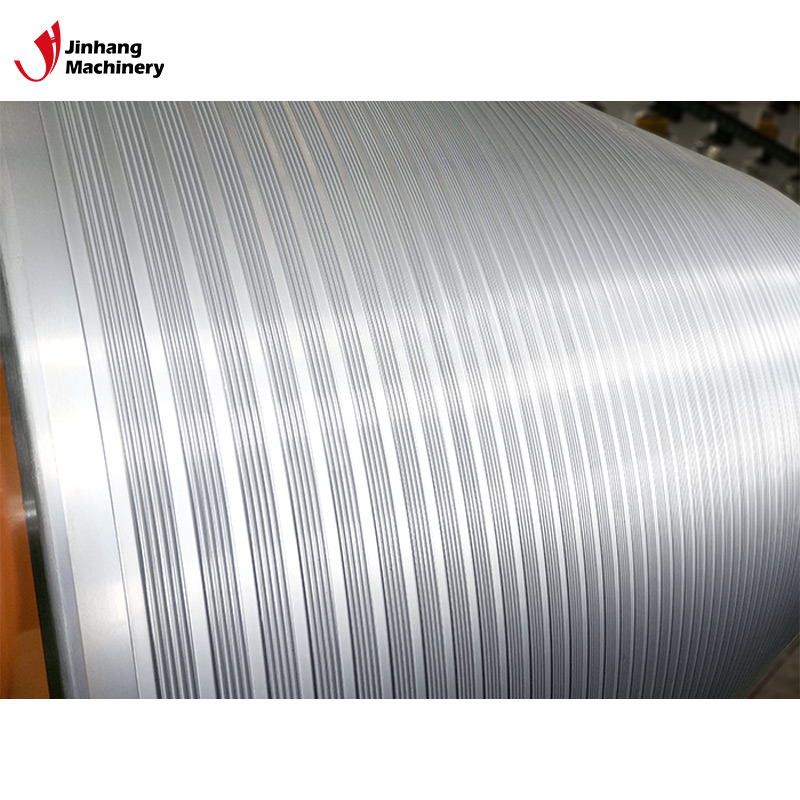What are the reasons for cracking of industrial chrome plated rollers?
In modern industrial production, chrome plated rollers are widely used in many fields, such as printing, textiles, papermaking, plastic film production, and steel manufacturing. The reason why chrome plated rollers are widely used is mainly because their chrome plating layer has high wear resistance, corrosion resistance, excellent hardness and excellent surface finish. However, despite these advantages, chrome plated rollers sometimes crack and fall off in actual use. This not only affects production efficiency, but also increases maintenance and replacement costs.
This article will analyze in detail the main reasons for cracking of the chrome plating layer of industrial chrome plated rollers. By understanding these reasons, companies can take effective measures to extend the service life of chrome plated rollers and reduce unnecessary losses in production.

Chrome plated roller: What are the reasons for cracking of the chrome plating layer?
Chrome plating layer cracking is one of the more common faults in industrial chrome plated rollers. This phenomenon is usually the result of the combined action of multiple factors, mainly including mechanical stress, thermal stress, material quality and processing technology.
Mechanical stress
Mechanical stress is one of the main reasons for the cracking of the chrome plating layer. In actual use, chrome plated rollers often bear large mechanical loads, especially in high-intensity working environments. The accumulation of mechanical stress can cause microcracks or large-scale cracking of the chrome plating layer.
Sources of mechanical stress:
● Pressure during roller operation: Industrial chrome plated rollers are usually used in processes such as calendering and rolling. In these processes, the roller surface is often subjected to great pressure. If the pressure is uneven or exceeds the tolerance of the chrome plating layer, the surface coating will crack due to excessive compression.
● Friction between the roller and the processed material: In some high-friction environments, the friction between the chrome plated roller and the processed material may cause the surface of the chrome plating layer to wear too quickly, thereby causing stress concentration and eventually cracking.
● Vibration and impact: The roller will inevitably encounter external vibration and impact during operation. If the vibration frequency is too high or the impact force is too large, the chrome plating layer cannot withstand such stress changes and is prone to fatigue cracking.
Thermal stress
During the industrial production process, chrome plated rollers often undergo multiple thermal cycles, and the drastic temperature changes will cause thermal stress in the chrome plating layer. Especially under high temperature operation, thermal stress is an important cause of cracking of the chrome plating layer.
Formation of thermal stress:
● Frequent alternation of heating and cooling: During the operation of chrome plated rollers, the chrome plating layer on the surface of the roller will expand and contract due to repeated alternation of heating and cooling. Due to the different thermal expansion coefficients of the chrome plating layer and the substrate, this uneven expansion and contraction will cause thermal stress to concentrate on the surface of the chrome plating layer, which will cause cracks over time.
● Increased brittleness of the chrome plating layer in a high temperature environment: Under high temperature conditions, the toughness of the chrome plating layer is low and it becomes more fragile. If effective cooling or protection is not carried out in time, the chrome plating layer is prone to cracking.
● Excessive temperature difference: After the roller works in a high temperature environment, if it is cooled quickly, the temperature difference will aggravate the stress accumulation of the chrome plating layer and easily form cracks. Especially on the production line, rapid switching of temperature processes or direct contact with coolant will aggravate this phenomenon.
Substrate quality issues
The quality of the substrate of the chrome plated roller will also have a direct impact on the service life of the chrome plating layer. If the quality of the substrate is not up to standard, even if the chrome plating layer itself is very strong, it is difficult to avoid cracking.
The impact of the substrate on the cracking of the chrome plating layer:
● Substrate surface roughness is unqualified: Before chrome plating, the surface of the substrate needs to be very finely ground and polished. If the surface roughness of the substrate is unqualified, the bonding force between the chrome plating layer and the substrate is poor, and the chrome plating layer is prone to cracking due to microscopic surface defects of the substrate during use.
● Insufficient substrate hardness: If the substrate hardness of the chrome plated roller is insufficient, the substrate is prone to deformation when bearing large mechanical stress, and this deformation will be manifested through the chrome plating layer, which will lead to surface cracking.
● Uneven substrate material: Some chrome plated roller substrate materials have impurities or uneven material distribution, which will cause stress concentration when the substrate is subjected to stress, and easily cause cracks on the surface of the chrome plating layer.
Chrome plating process issues
The quality of the chrome plating process directly determines the durability and service life of the chrome plating layer. If the chrome plating process is not properly operated, it is easy to cause problems such as uneven thickness and insufficient bonding of the chrome plating layer, which will cause cracking.
Common chrome plating process problems of chrome plated roller:
● Uneven thickness of chrome plating layer: During the chrome plating process, if the thickness of the chrome plating layer is not evenly controlled, the weak part of the surface is prone to crack first when it is subjected to stress, which will lead to the cracking of the entire chrome plating layer.
● Weak bonding between the chrome plating layer and the substrate: The insufficient bonding between the chrome plating layer and the substrate may be due to improper substrate treatment or problems with the chrome plating solution formula. This will cause the chrome plating layer to peel off or crack easily when subjected to external stress.
● Uneven current density during electroplating: If the current density is uneven during chrome plating, it is easy to cause inconsistent plating quality, resulting in stress concentration and increasing the risk of cracking.
Environmental corrosion
Although the chrome plating layer has good corrosion resistance, in some extreme environments, especially when exposed to strong acids, strong alkalis or other corrosive media for a long time, the anti-corrosion ability of the chrome plating layer may gradually weaken, leading to cracking of the chrome plating layer.
Effects of corrosion on chrome plating:
● Chemical corrosion: If the chrome plated roller is exposed to strong acid, strong alkali and other chemical substances for a long time, the surface of the chrome plating may gradually react chemically, resulting in the destruction of the plating structure and cracking.
● Electrochemical corrosion: When the chrome plating layer and other metal parts are in contact for a long time, electrochemical corrosion may occur, resulting in partial shedding or cracking of the chrome plating layer.
Wear during use
During long-term high-intensity use, the chrome plating layer of the chrome plated roller will gradually wear out due to constant friction with the processed material. Once the chrome plating layer becomes thinner or severely worn, cracks are very likely to occur on the surface, especially in a high-load working environment, the weak areas after wear will first crack.

Chrome plated roller: How to prevent the chrome plating layer from cracking?
After understanding the main causes of chrome plating cracking, how to prevent this problem becomes the key. The following are some effective preventive measures:
1. Reasonably control the working pressure and stress distribution: Ensure that the pressure chrome plated roller bears during operation is within the design range and avoid stress concentration.
2. Control temperature changes: avoid rapid heating or cooling, minimize temperature differences, and reduce the generation of thermal stress.
3. Improve substrate quality: select high-quality substrates, ensure that the hardness and surface treatment of the material meet the requirements, and avoid material defects.
4. Improve chrome plating process: ensure uniform thickness of the chrome plating layer, improve the accuracy and stability of the electroplating equipment, and ensure the bonding strength between the chrome plating layer and the substrate.
5. Regular inspection and maintenance: Regularly check the surface condition of the chrome plated roller, promptly detect and deal with small cracks or wear to avoid problems from worsening.

JH Machinery – Your Source for Customized Rolls and Machinery Components
JH Machinery has built a solid reputation as a leading manufacturer and supplier of customized rolls and industrial machinery components. Our wide selection of rolls, from mirror-finished to ceramic-patterned, are used across various industries, including metallurgy, packaging, and electronics. With a focus on high-quality materials and precision engineering, we guarantee our rolls deliver optimal performance and durability. Get in touch with us for personalized pricing, or to discuss your project’s requirements. Our factory is ready to fulfill wholesale orders and provide competitive quotes.
